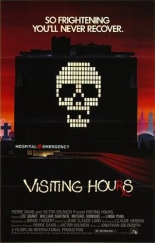
 I am not a fan of hospitals. I can’t take three steps into one without being overcome with a wave of anxious nausea, keenly aware that somewhere in that building — far closer than I’d like — someone is drawing his or her last breath. Ironically, it’s that same anxiety that draws me to hospital-set and medical-themed horror movies, since they allow me to face my fear without risk or consequence. Having seen a lot of them, I can comfortably say that the 1982 Canadian-made Visiting Hours ranks near the top of the list.
I am not a fan of hospitals. I can’t take three steps into one without being overcome with a wave of anxious nausea, keenly aware that somewhere in that building — far closer than I’d like — someone is drawing his or her last breath. Ironically, it’s that same anxiety that draws me to hospital-set and medical-themed horror movies, since they allow me to face my fear without risk or consequence. Having seen a lot of them, I can comfortably say that the 1982 Canadian-made Visiting Hours ranks near the top of the list.
While it admittedly never exploits its setting as effectively as Boaz Davidson’s Hospital Massacre, it manages to avoid descending into the ridiculous camp that mars that otherwise interesting effort and, more importantly, creates sympathetic characters we want to see live, rather than die — the hallmark of every successful horror movie.
 The film stars Michael Ironside as a misogynist maniac on a mission to kill the popular female broadcaster (Lee Grant) who has taken on the cause of a battered woman unjustly convicted of murdering her abusive husband. When his initial attack on her is thwarted, he returns to the hospital to finish the job, but only manages to kill a bunch of other people before she is able to use his own knife to end his deadly spree.
The film stars Michael Ironside as a misogynist maniac on a mission to kill the popular female broadcaster (Lee Grant) who has taken on the cause of a battered woman unjustly convicted of murdering her abusive husband. When his initial attack on her is thwarted, he returns to the hospital to finish the job, but only manages to kill a bunch of other people before she is able to use his own knife to end his deadly spree.
Directed with style and tension by Jean-Claude Lord, Visiting Hours succeeds thanks to effective performances from its talented cast, which also includes William Shatner as Grant’s producer, and Linda Purl as the young, single mom/nurse who finds herself also stalked by Ironside after she witnesses him leaving the scene of one of his crimes. —Allan Mott

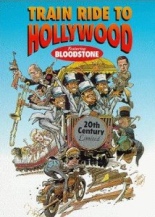
 In the realm of bad musicals, most know about
In the realm of bad musicals, most know about  Said choo-choo is headed to Tinseltown, and the passengers are impersonations of movie legends Humphrey Bogart, W.C. Fields, Dracula and Clark Gable, who uses the “Frankly, my dear, I don’t give a damn” joke more than once. Also aboard are a sheik with seven whores,
Said choo-choo is headed to Tinseltown, and the passengers are impersonations of movie legends Humphrey Bogart, W.C. Fields, Dracula and Clark Gable, who uses the “Frankly, my dear, I don’t give a damn” joke more than once. Also aboard are a sheik with seven whores, 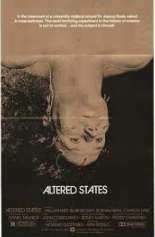
 There’s no need to watch
There’s no need to watch 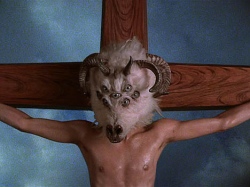
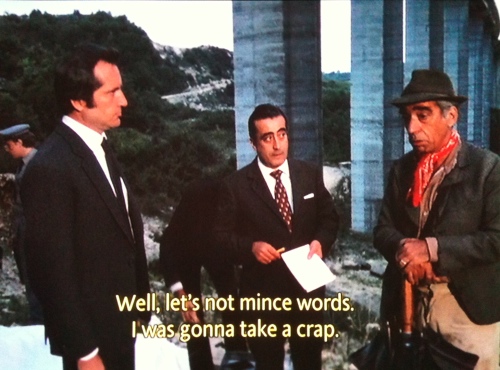

 Women. Don’t listen to ’em. Snake-wranglin’ John Rambo (Sylvester Stallone) doesn’t when Colorado church missionary member Sarah (Julie Benz) comes to Thailand to ask him to take her team to Burma. He turns her down because it’s a literal war zone. She pleads. He says no. She pleads again. He says no. She pleads again. He says no. She pleads even more. He says “oh, alright,” probably just to shut her up.
Women. Don’t listen to ’em. Snake-wranglin’ John Rambo (Sylvester Stallone) doesn’t when Colorado church missionary member Sarah (Julie Benz) comes to Thailand to ask him to take her team to Burma. He turns her down because it’s a literal war zone. She pleads. He says no. She pleads again. He says no. She pleads again. He says no. She pleads even more. He says “oh, alright,” probably just to shut her up. 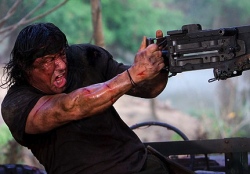 In all seriousness, the 20-year gap between
In all seriousness, the 20-year gap between